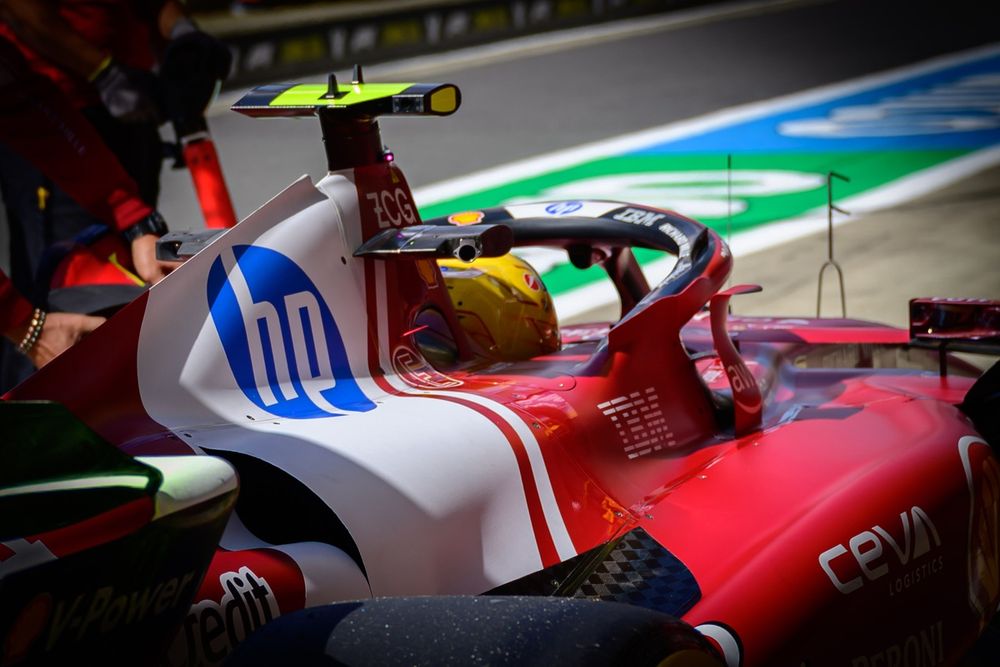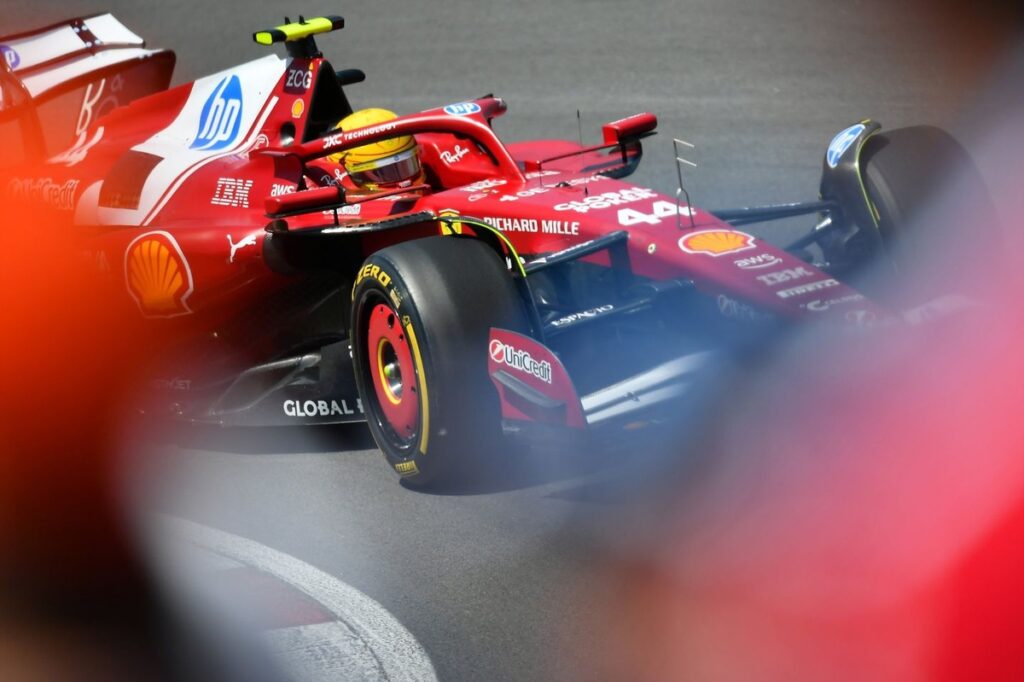Having passed the halfway point of the 2025 Formula 1 campaign, focus is fixed upon preparations for next season and the regulations overhaul – with Lewis Hamilton wanting to give his “DNA” to the next Ferrari car. But what exactly is he looking for?
The gap between the British Grand Prix and Belgian GP provides an ideal moment to take stock of both present and future, especially with one of the biggest technical revolutions in the championship’s history on the horizon. These two dimensions inevitably intertwine: the present and future may seem far apart, but they’re connected by a common thread of continuity, experience and development.
At Ferrari, this connection manifests in the need to turn around a season that has so far fallen short of expectations, with the awareness that the work done today and in the coming months will lay the groundwork for the 2026 car. Development is not yet in an advanced stage, but it is at a crucial point where basic design choices are being defined.
As with any new venture, the F1 2026 preparations show that now is a time not only to improve the short term but also to begin leaving a mark on the future, both technically and in terms of work methods. Each driver brings a wealth of experience that can be a valuable resource, especially when coming from a team that has remained at the top for years.
Ironing out inconsistencies from current Ferrari car
Hamilton’s 2025 season has been inconsistent so far, partly due to a lack of connection with the car. And it’s from these limitations – both technical and in terms of feeling – that the seven-time world champion is trying to shape his contribution to the 2026 Ferrari, openly expressing a desire to infuse the project with his own “DNA”.
Some issues stem from structural features of the car that must be assessed to find performance. Others are more tied to details that surface during adaptation to a new environment. It’s a common process, as seen with Carlos Sainz at Williams and Nico Hulkenberg at Sauber, who had requested changes to the power steering and throttle.
Ferrari SF-24 steering wheel
Photo by: Ferrari
Power steering is one of the aspects Hamilton has focused on since his first outings with Ferrari. Beyond what emerged after Silverstone – which may be linked to the need to redesign the steering system following a suspension layout change – the Briton has asked for targeted adjustments based on personal needs and adaptation challenges that only become evident through on-track work.
It’s important to distinguish between structural problems affecting both drivers and subjective needs related to individual feeling. Steering set-up, in particular, is highly personal: every driver has preferences that tend to become clear especially when changing teams and experiencing different lateral forces on track.
These details add to the inherent challenges of the SF-25, a car often difficult to balance. That’s why Charles Leclerc has leaned towards extreme set-up solutions, especially in how he exploits the front end and compensates at the rear. Hamilton has tried various directions to adapt, some more effective than others, and has begun aligning more closely with the Monegasque’s choices.
“Charles and the team found a way to make the car work. I tried all the other directions that should theoretically work, but for some reason they didn’t. So gradually I’ve gotten closer and closer to how Charles sets up the car,” said Hamilton. “Last week [in Austria] was when I got the closest, and our race pace was also the most similar. But it’s still difficult. It’s a tricky balance, and the driving isn’t comfortable.”
Nonetheless, these adjustments have improved his qualifying speed, reducing the gap to his team-mate, while race pace still suffers, particularly as tyre grip drops.
Some issues can’t be solved with set-up alone, like the feeling in fast corners, which is an area Hamilton has struggled with all season. It’s an instability that must be managed, especially in tight high-speed corners where trust and steering precision are critical.

Lewis Hamilton, Ferrari
Photo by: Erik Junius
Unsurprisingly, Hamilton has highlighted stability as an area needing improvement, now and in the future.
“Charles has been working with a car that’s a bit more oversteery, and that approach has worked well,” said Ferrari deputy team principal Jerome d’Ambrosio. “Recently, Lewis has moved in that direction and is making it work. I think it’s a result of the current regulations. We’re seeing instability at corner entry. These cars are nervous, and drivers have to partly learn to live with that.”
There are specific technical issues limiting Leclerc as well, such as front-end struggles in slow corners. The longer and more flowing the corner, the more the SF-25 tends to understeer at the front. In sharper corners, some of these issues are masked, as seen in Austria. This makes it difficult to find a balanced compromise.
Finding a bigger operating window
Some aspects can be improved in the short term, but others require time – especially with 2026 in mind. The goal is not necessarily to go in one specific direction but to have more operational flexibility. For instance, since the beginning of the year, Hamilton has pointed out problems with the brakes and engine braking, which he finds too aggressive. At Mercedes, those elements were smoother – a difference not easily fixed via steering wheel settings, especially for a driver who likes to trail brake into corners.
In developing a new car, engineers always seek performance through design to meet set goals for downforce and drag. That’s why cars are not built around a specific driver. Instead, the driver’s input helps identify areas where more flexibility is needed – broad themes that become guidance based on experience.
This is where Hamilton is trying to give the 2026 Ferrari his “DNA”, not just technically but also in terms of working methods. Considering the packed calendar, factory drivers often test the following year’s car in the simulator relatively late, unless there’s a major regulation change. In such cases, feedback arrives earlier, but mostly at a conceptual level.
Lewis Hamilton, Ferrari
Photo by: Peter Fox / Getty Images
“We listen to the drivers’ input. Not just one driver, both. It’s actually interesting, because during factory meetings, it often turns out the drivers arrive at very similar requests, conceptually, about what they need from the car,” said d’Ambrosio at Silverstone.
“We try to take that into account. Of course, part of development is simply about bringing a package that maximises downforce and performance. But there’s also a lot that can be done to give the drivers the right tools and conditions to work, and to make sure they can adapt the car as much as possible to their driving style.
“There are two phases, and I don’t think they’re entirely separate. Generally, there are overall balances in the car that generate performance. Then there’s a second phase involving the details – a phase where you absolutely must listen to the drivers.”
In this article
Be the first to know and subscribe for real-time news email updates on these topics
Subscribe to news alerts
Read the full article here

